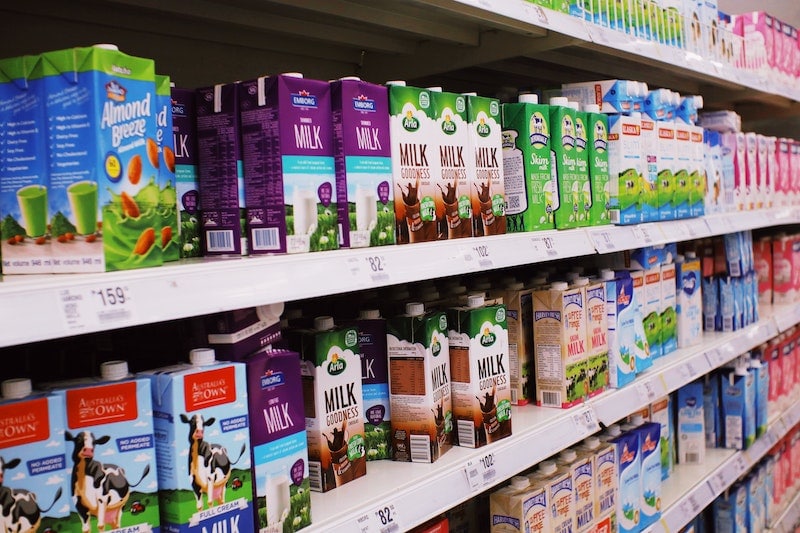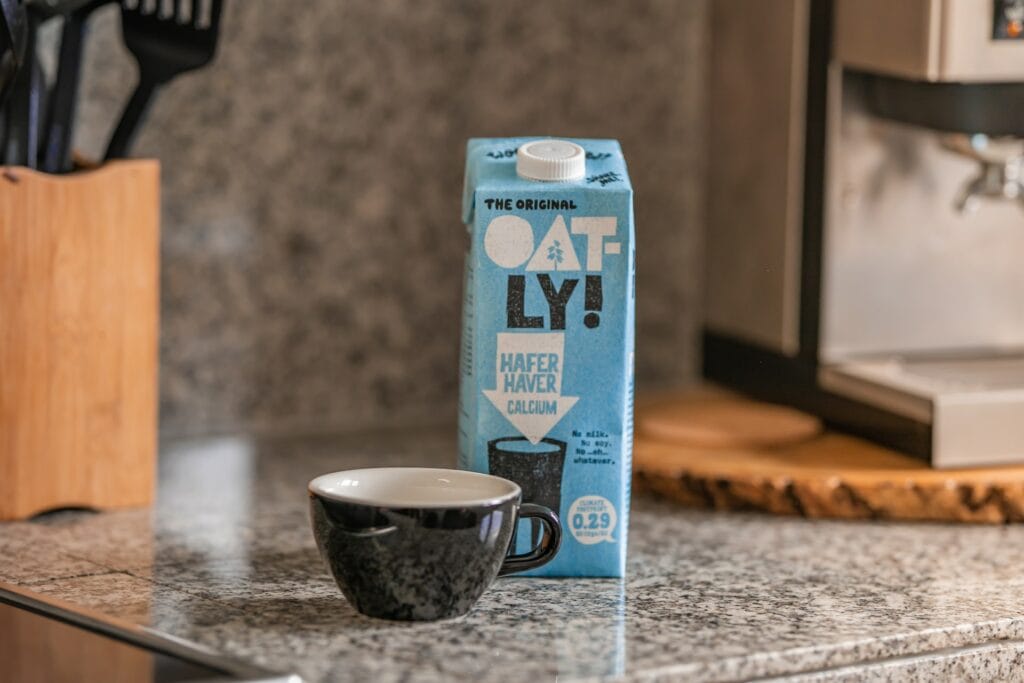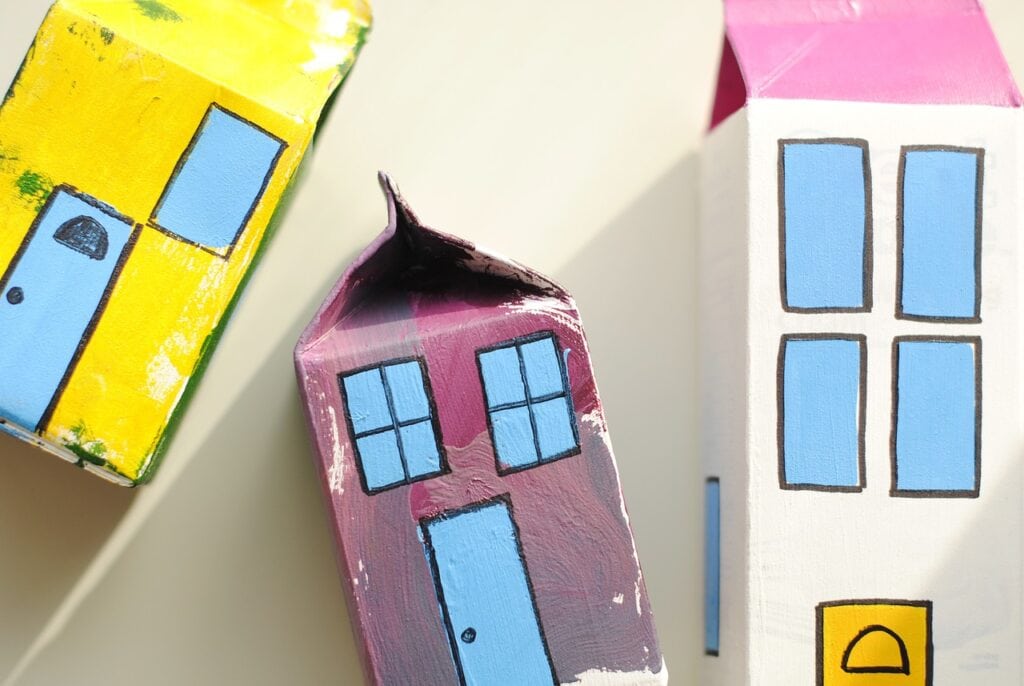Are Milk Cartons Recyclable? How Do You Properly Dispose of Them?
-

- Last updated:

Milk cartons are primarily made of paper, but they are coated with a thin layer of plastic. Shelf-stable cartons also have a layer of aluminum on the inside. The good news is that more than 62% of US communities can recycle milk cartons today.
While all types of milk cartons can be recycled, your local area may still need to update its recycling facilities. The critical thing that makes their recycling hard is the material from which they are made.
This article goes into detail about how to properly dispose of milk cartons!
What Are Milk Cartons Made Of?
As reported by the Carton Council, milk cartons are made from paperboard and layered with food-safe polyethylene plastic on both sides. The cartons that don’t need refrigeration until the seal is broken are also layered with thin aluminum foil from the inside. They are known as shelf-table cartons or antiseptic containers.
In most cases, manufacturers combine paper and plastic in a ratio of 80:20 when making gable-top cartons. Antiseptic containers have different combinations, though, typically containing 74% paper, 22% plastic, and 4% aluminum.
Juice, egg substitutes, and non-dairy milk also use the same type of cartons as milk. In the 19th century, milk was primarily packaged in glass bottles since cartons hadn’t gained acceptance. They could neither be reused nor sanitized. It wasn’t until the 1960s that milk jugs made their first appearance and dominated the milk market until now.

Are Milk Cartons Biodegradable?
In a nutshell, milk cartons are environmentally friendly. However, their decomposition process is quite different from other paper materials because of their plastic elements. As such, they may take more than five years to be completely broken down by soil microorganisms. By comparison, milk cartons decompose faster than other packaging materials, typically taking several decades or centuries to break down fully.
How to Recycle Milk Cartons
Recycling milk cartons is always as easy as throwing them in a curbside recycling bin. However, this may not be the case for all areas because some recycling companies require you to sort them into specific containers or methods.
Whether a recycling facility accepts cartons or not depends on its capability to separate multilayer materials. It also depends on the availability of the necessary processing machines at the Materials Recovery Facility. For this reason, ensure you confirm with your local recycling company whether they require you to follow certain instructions first.
Generally, we can’t be thankful enough for modern technology as we can now recycle milk cartons despite the difficulties posed by the products. But before disposing of your milk cartons in the recycle bin, it’s imperative to keep the following steps at your fingertips:
- Upon exhausting the carton contents, rinse it with water to get rid of foul odors and sour milk. If you toss them away without rinsing, you shouldn’t be surprised when the recycle bin starts reeking an unpleasant smell.
- Shake off the water and dispose of the carton in the recycle bin. Place them loosely in the bin while differentiating them from plastic bags since they can hinder the sorting process.
- Instead of disposing of your milk cartons in the recycle bin, you can alternatively package and send them to your local recycling facility directly. The workers will confirm whether they are recyclable before loading them into a giant blender known as a Hydrapulper. This machine will then separate plastic and aluminum from paper to make new products.

If you want to dispose of your milk cartons alongside plastic bottles and containers, you can simply toss them in your curbside recycling bin. Most curbside programs accept different plastic materials, including milk cartons. Just ensure you rinse and drain them thoroughly before dumping them in the curbside bin.
Considering that recycling technology evolves and that different cities have varying recycling processes, it would be better to confirm a few things from your local recycler first.
- Accept milk cartons with caps or lids on
- Accept cartons and containers with torn spouts
- Accept crushed or flattened cartons
How to Get Creative With Milk Cartons
If you are feeling a bit creative, there are several DIY items you can make using milk cartons. The best thing about reusing milk cartons is that you significantly reduce the possibility of mixing them up with non-recyclables. Instead of recycling them, consider reusing them to design the following items:

1. Kid Crafting Project
Did you know you can convert milk cartons into nice structures such as toys, Lego figures, and craft birds? You can also cut milk cartons open and fold them creatively to make origami butterflies, dinosaurs, and other fun items. You can also paint them to get the best effects.
2. Bird House
If your cartons are large enough, you can use them to create a birdhouse. The process is very simple—just make a hole in the sides of the carton and add a natural liner to ensure the nest comes off as soft and comfy for the bird. Instead of spending any fortune on purchasing cages for your pigeons, parrots, and doves, you can get creative and make them a home using milk cartons.
3. Planter Box
If gardening is one of your passions, milk cartons can come in handy since they work effectively as planter boxes. Simply fill them with dirt and kitchen waste before creating small holes around the bottom to aid in drainage.
4. Storage Containers
Cut open your gable top cartons, wash them with soap and water, and allow them to dry thoroughly. Now, you can use them to store dry items such as rice, white sugar, sunflower seeds, sprinkles, etc. If you will staple the top opening, remember to label them appropriately to illustrate what’s inside.
Conclusion
Milk cartons are made from paper, plastic, and sometimes aluminum foil. Since plastic negatively impacts the natural environment, it is important to recycle it to help reduce waste.
The recycling process is simple; you can mail them to the recycling facility or dispose of them in the bin. Alternatively, you can become creative and reuse them to make toys, birdhouses, planter boxes, and storage materials.
Featured Image Credit: nothing-ahead, Pexels
Contents

